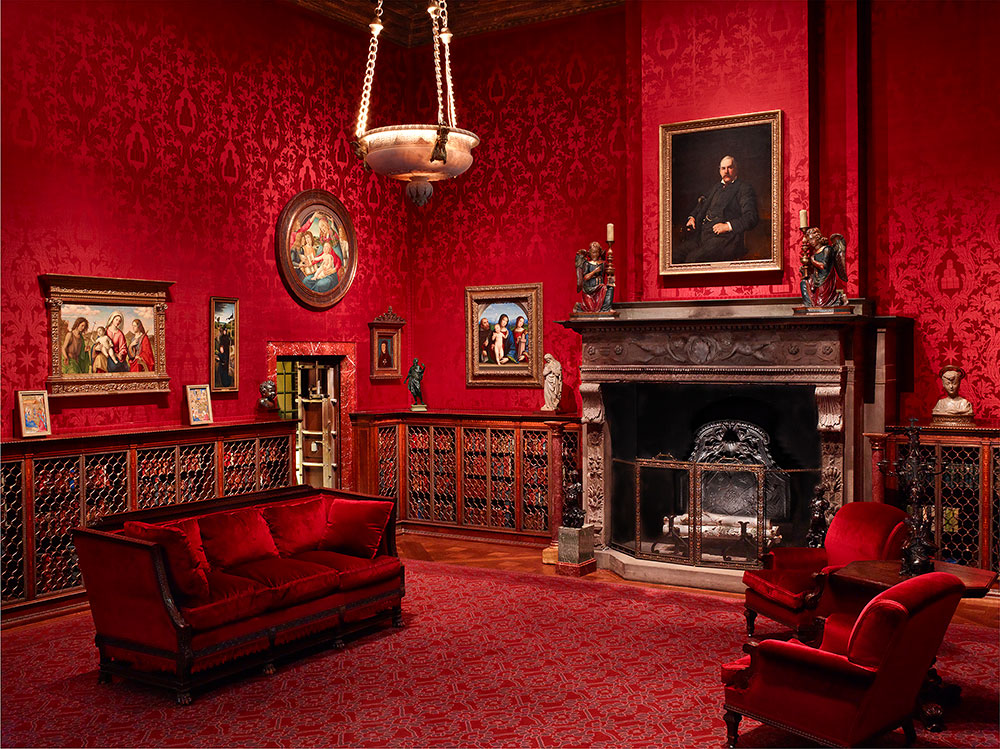
“It is no impression of ostentation that one obtains upon entering,” wrote the London Times correspondent who visited the Library in 1908, “but one of exquisite, peaceful chambers in which a man superlatively fortunate may pass his hours divinely.” While ostentation (or lack thereof) may be in the eye of the beholder, J. Pierpont Morgan was certainly a fortunate man. He spent many hours here in his private study, smoking Cuban cigars, playing solitaire, and receiving guests.
Every available space was filled with splendid things: custom-made furniture in a sixteenth-century Italian style, small-scale artworks atop the low walnut bookcases, treasure bindings propped on tabletops, and oil paintings hung on the silk-covered walls or affixed to freestanding easels. A steel-lined vault housed medieval and Renaissance manuscripts as well as modern literary manuscripts and letters. The room itself combined antique elements with new, positioning its inhabitant as a latter-day Renaissance prince capable of acquiring, or commissioning, whatever he fancied.
